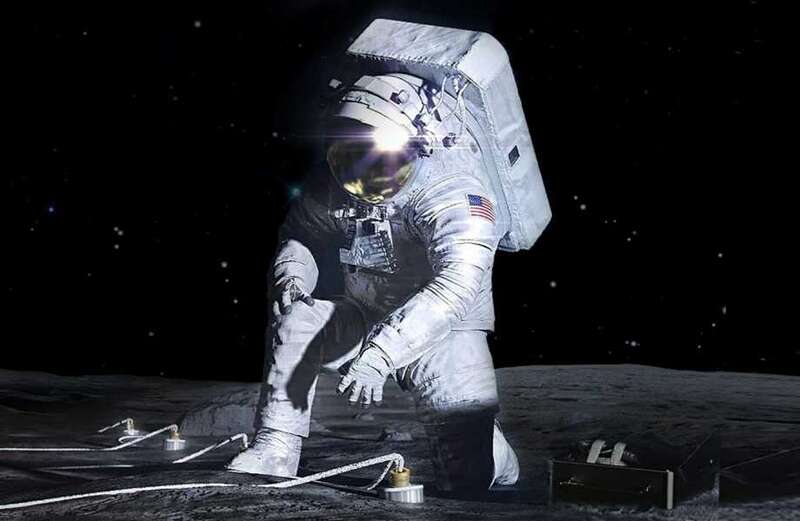NASA has chosen the first science instruments designed for astronauts to use on the surface of the Moon during Artemis III.
Artemis III is the first mission to return astronauts to the surface of the Moon in more than 50 years.


The mission will explore the south polar region of the Moon, within 6 degrees of latitude from the South Pole.
Now, Nasa has unveiled three tools it plans to use during the groundbreaking mission.
NASA'S MOON TOOL
The first instrument is the Lunar Environment Monitoring Station (LEMS).
 Charming UK village is 'UFO hotspot' with 'NASA scientists showing interest'
Charming UK village is 'UFO hotspot' with 'NASA scientists showing interest'
This comprises a small seismometer suite that will continuously measure motion from moonquakes.
Overseen by Mehdi Benna of the University of Maryland, the tool works autonomously to study the Moon's crust and mantle.
LEMS is expected to gather continuous data anywhere between three months to two years.
Next up is the Lunar Effects on Agricultural Flora, or LEAF, which will look into the Moon's surface's effects on space crops.
LEAF will be the first tool to study plant photosynthesis, growth, and systemic stress in a space-radiation environment, Nasa explained.
This innovative experiment is led by Christine Escobar of Space Lab Technologies in Boulder, Colorado.
Last is the Lunar Dielectric Analyzer (LDA), which will measure the regolith’s ability to propagate an electric field.
The regolith is a region of loose rock and dust that sits atop a layer of bedrock.
Analyzing the Moon's regolith is a "key parameter in the search for lunar volatiles, especially ice," Nasa explained.
Once the tools are installed near the lunar South Pole, the three instruments will collect valuable scientific data about the lunar environment.
 Astronomer leads hunt for Northern Lights 'sound' rarely heard in the aurora
Astronomer leads hunt for Northern Lights 'sound' rarely heard in the aurora
They will also help scientists analyze the lunar interior, and further the goal to one day build a human presence on the Moon.
All of which will help Nasa to one day, hopefully soon, send astronauts to Mars.
“Artemis marks a bold new era of exploration, where human presence amplifies scientific discovery," said Nasa Deputy Administrator Pam Melroy.
"With these innovative instruments stationed on the Moon’s surface, we’re embarking on a transformative journey that will kick-start the ability to conduct human-machine teaming – an entirely new way of doing science," she added.
"These three deployed instruments were chosen to begin scientific investigations that will address key Moon to Mars science objectives."
ARTEMIS III
Nasa's Artemis III aims to explore the dark side of the Moon, which never faces Earth.
The crewed mission hopes to land the first woman and first person of color on the Moon's surface.
Right now, Nasa is said to be on track with its 2024 plans but all rocket launches are not set in stone and many factors can set them back days, or even months.


































